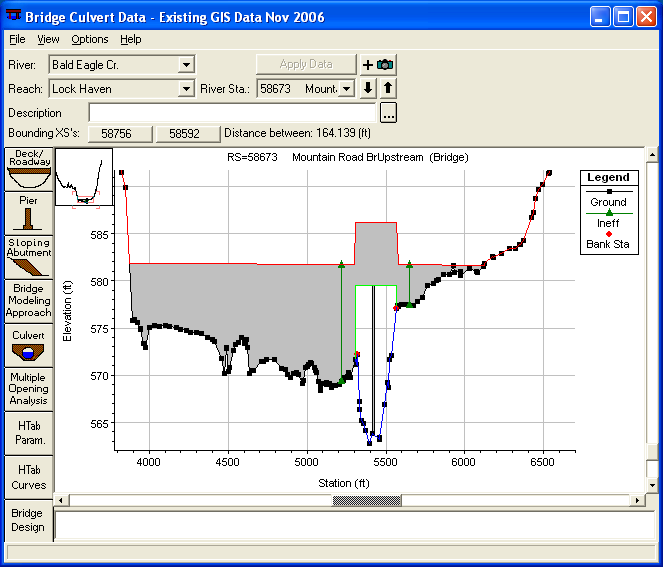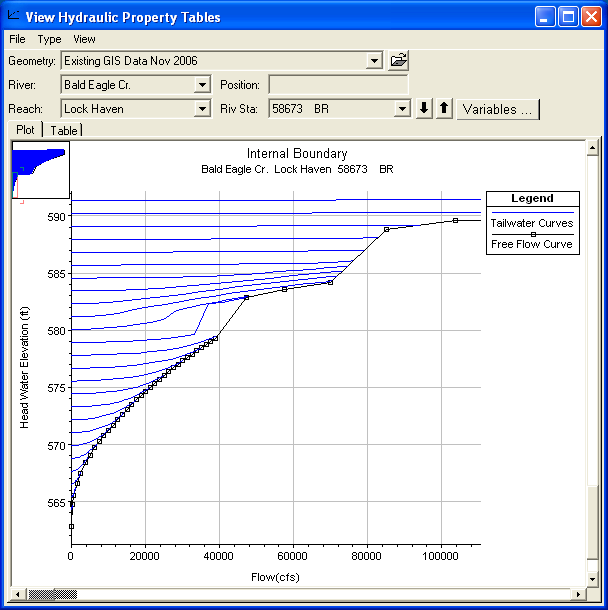Bridges and culvert crossings can often be a source of model instability problems in a dam break study. Many downstream bridges will be overtopped, and may even be washed away. If it is almost certain that a downstream bridge/Culvert will be washed away, then it probably does not need to be included in the model. Additionally, if a structure is so high above the stream that the water surface will not hit the low chord of the bridge deck (which may be the case for very large highway bridges that are far downstream from the dam), then that bridge will also not need to be modeled. However, if the road embankment, and the bridge/culvert will cause a backwater (i.e. a significant rise in the water surface), then it should be included in order to obtain the correct stages upstream of the structure and the increased storage behind the structure. If the impact of the structure is unknown, then in general it should be modeled. Then once the model is up and running, the structure could be evaluated for both its impact on the water surface and whether or not it is expected to remain in place due to the forces placed on it during the event.
Bridge/culvert crossings are a common source of model stability problems when performing a dam break analysis. Many bridges will be overtopped during such an event. Many of those bridges may in fact be washed out during such an event. A common problem at bridges/culverts is the extreme rapid rise in stages when flow hits the low chord of the bridge deck or the top of the culvert. Modelers need to check the computed family of rating curves closely and make sure they are reasonable. One solution to this problem is to use smaller time steps, such that the rate of rise in the water surface is smaller for a given time step. Modelers may also need to change hydraulic coefficients to get curves that have more reasonable transitions.
Just as with cross sections, HEC-RAS pre-processes bridges/culverts into a family of rating curves. Users must ensure that these curves go high enough to capture all possible water surface elevations and flows. An additional source of instability can arise when the curves do not go high enough, and the program extrapolates from the last two points in the curve. This extrapolation can cause problems when it is not consistent with the cross section geometry upstream and downstream of the structure. The extrapolation is basically assuming that the changes in conveyance, area, and other hydraulic parameters are linear with respect to increased stage. However, these hydraulic properties are very non-linear. Therefore the extrapolation can cause the unsteady flow equations to be difficult to solve. An example bridge crossing and set of preprocessed curves is shown in the figure below.

